This Independence Day, people power will be on proud display as 75 hamlets in Raigad sport ideal village tag in a unique partnership between an NGO and local government officials
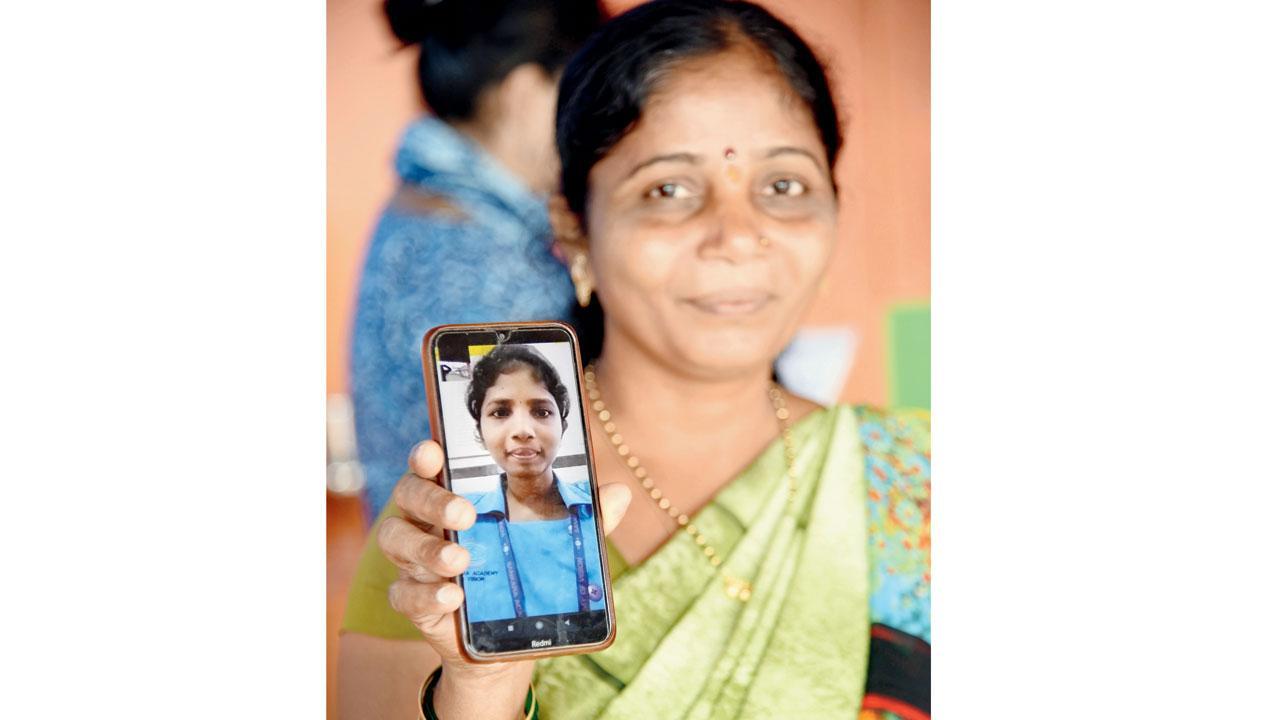
Siddhi Gajanan Jangam’s daughter, Samruddhi, is the first girl from Jangamwadi in Raigad district to pursue an ophthalmology course. She is currently employed with Sankara Eye Hospital in Panvel. Her dream is to start an eye centre in the village. Pic/Sameer Markande
A village can be a tough nut to crack, from the inside and out. Prasad Patil, a resident of Mangaon, a market town in Raigad district, nearly 140 km from Mumbai, says it could take years before you gain the confidence of an entire village. Fifteen years ago, Patil remembers riding pillion on a bike with a colleague, a TV set and video CD player in tow, negotiating hairpin bends on the hilly terrain, trying to make a case for an unusual project. At every village he visited, he’d hope there was electricity supply available long enough to screen a film—he mostly preferred the Shah Rukh Khan-starrer Swades, which tells the ghar vapsi story of NASA scientist Mohan Bhargava who rediscovers his roots in rural India, and eventually chooses to settle down there. The movie was meant to be an ice breaker, he tells us. It was one of his many tried-and-tested methods to bring the villagers together to listen to what he had to say. “Convincing them,” he says, “would take five years... sometimes even eight.” But, it barely dampened the spirit of the young social worker.
ADVERTISEMENT
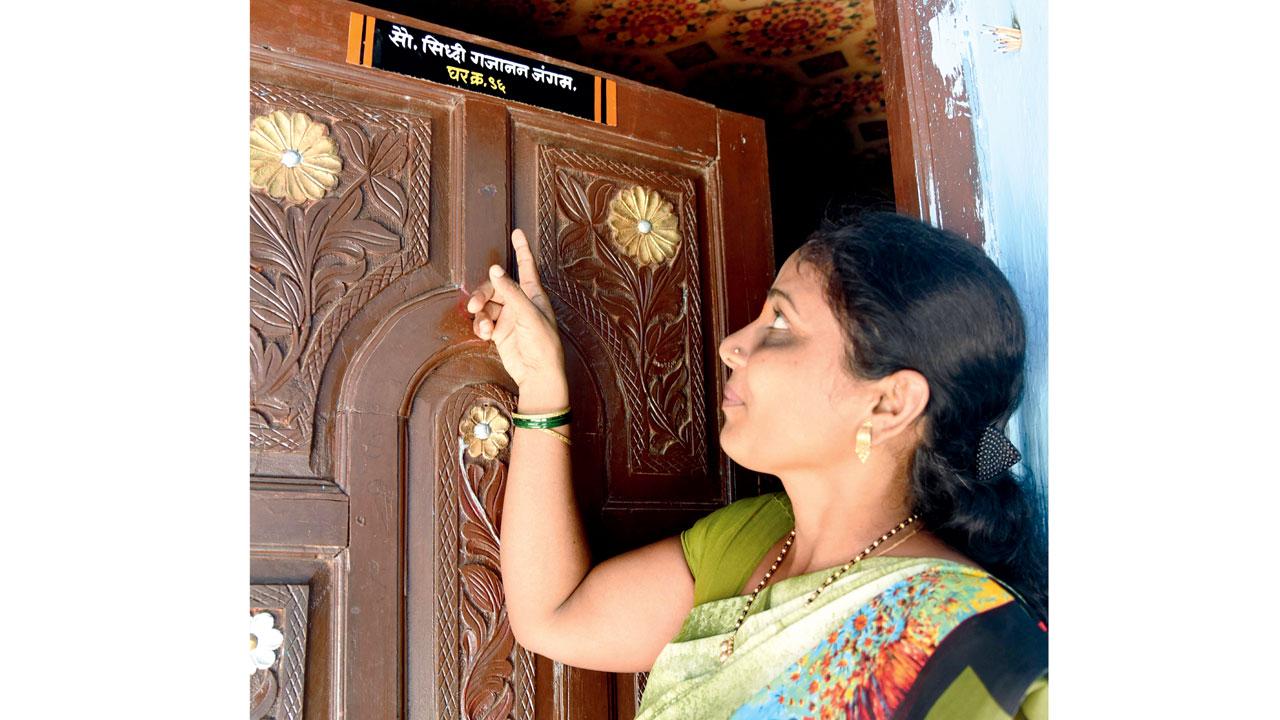
Siddhi Gajanan Jangam, resident of Jangamwadi in Raigad, points to the newly-made nameplate at the entrance of her house that bears her name. Pics/Sameer Markande
This month, his persistence will finally pay off when Khamgaonwadi and Jangamwadi, both in the Mhasla Taluka of Raigad, are unveiled by local authorities as “Dream Village” projects, helmed by non-profit Swades Foundation, where Patil works as general manager. The two hamlets are among 75 in the Raigad and Nashik districts to achieve this feat, marking India’s 75th Independence Day. These villages through years of systematic interventions in education, health and nutrition, livelihoods, and water and sanitation, have become self-sufficient communities. “Our pursuit is to launch 750 more in the coming years. India’s true growth story can only be realised when our rural communities build aspiration and take ownership of their development,” says Zarina Screwvala, co-founder of Swades Foundation, which she runs with film producer Ronnie.
Working in over 2,500 village hamlets in Maharashtra for the last two decades, the organisation’s aim has been to improve the standard of living and quality of life of the gram population through improved amenities, enhanced human development, and better livelihood opportunities. “...But everyone’s idea of a Dream Village is different,” says Patil, when we meet him in Mangaon. “For some, it’s having continuous water supply, for others, clean toilets or better work opportunities so that they don’t have to move to find jobs.
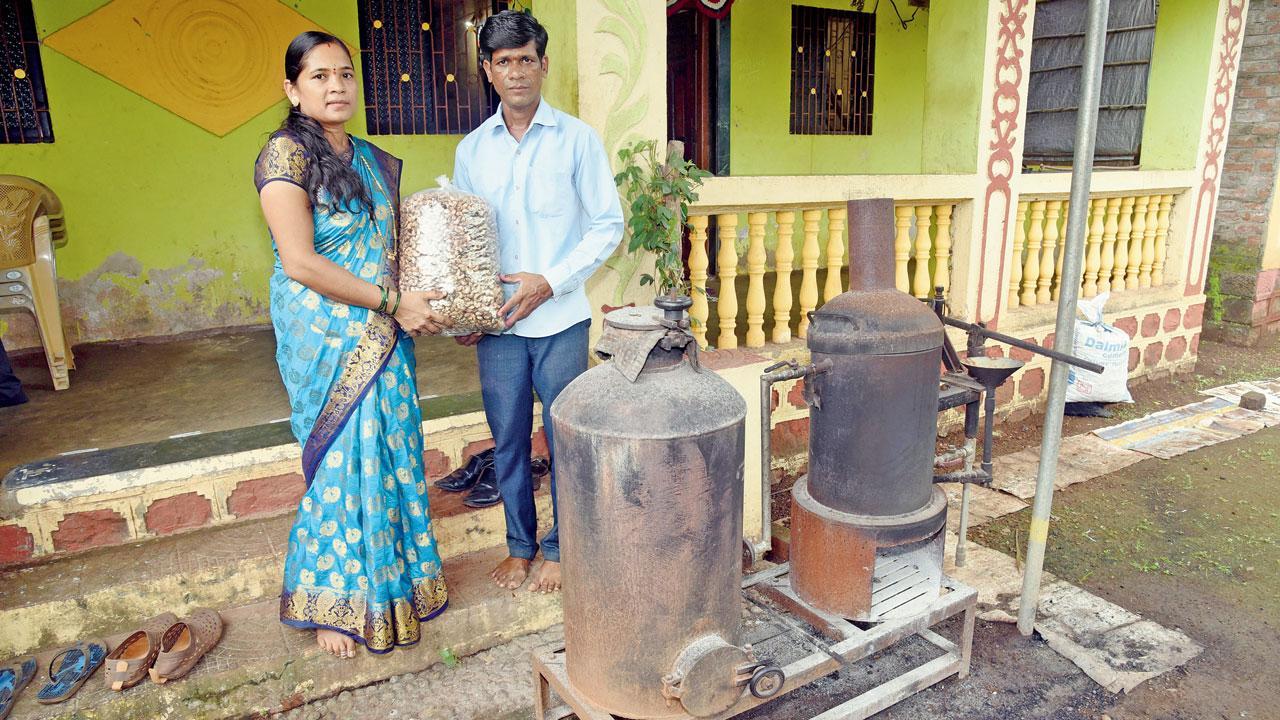
Khamgaowadi residents Nitin Sakaram Navghare and his wife Netra, a gram panchayat member, own a cashew processing unit to clean cashews. Their business employs several women from the hamlet
We decided to have focussed group discussions with the villagers about what they’d like to see in their ideal village. On the basis of what they shared, we shortlisted
41 parameters that would help a village achieve Dream Village status.” The parameters included enabling children to acquire education till Class XII, building health centres, training community health volunteers, reviving cultural heritage, arts and crafts, improving economic prospects, constructing motorable roads, segregating waste, and ensuring every home has a toilet and tap.
The goal was to make them sunder (beautiful), saksham (empowered), swasth (healthy), sakshar (providing education for all) and swachch (clean)—a blueprint for the ideal village. At present, work is on in seven blocks of Raigad district (Mahad, Mangaon, Mhasla, Poladpur, Shrivardhan, Tala and Sudhagad), and in one block in Nashik (Igatpuri). Work is ongoing to expand into three more blocks in the Nashik district (Trimabakeshwar, Surgana and Peth).

Khamgaonwadi and Jangamwadi, both in the Raigad district, have been unveiled by local authorities as “Dream Village” projects, helmed by non-profit Swades Foundation. The villages have achieved the five goals of sunder (beautiful), saksham (empowered), swasth (healthy), sakshar (providing education for all) and swachch (clean) set by the NGO
Nearly an hour’s drive from Mangaon is Khamgaonwadi, a village hamlet hidden inside a hilly outcrop. Two hundred years old, its story is still new, when compared to the region’s, which has exchanged multiple hands—the Marathas, Mughals and the British—in a span of five centuries.
Every monsoon, the sky breaks open, often ravaging the homes and creating rivulets in the tiny alleys and bylanes. “Despite receiving heavy rainfall through the wet season, by later winter and the summer months, the village would go dry,” recalls Balkrishna Laxman Sawant, while speaking of Khamgaonwadi. This was 20 years ago. “Back then, the village had two wells, which were nothing but deep pits in the ground. By late December, it would get impossible to draw water from the well, as the levels would recede drastically. The women, who were in-charge of getting water, had to climb down the ditches with katoris and fill their handis. The summers were barren. We wouldn’t have water for days on end,” he remembers. The water scarcity had led to sleepless days and nights. “Sometimes, if the wells filled up, the women would go as early as 2 am to draw water.” Many of the villagers, especially women, would develop guinea worm disease, which is known to affect poor communities that do not have safe water to drink. People generally get infected by drinking unfiltered water from stagnant water containing copepods—tiny water fleas known to swallow guinea worm larvae. The symptoms evolve over a year with slight fever, nausea, vomiting and dizziness, finally manifesting as blisters. The blisters eventually rupture, exposing the worm.
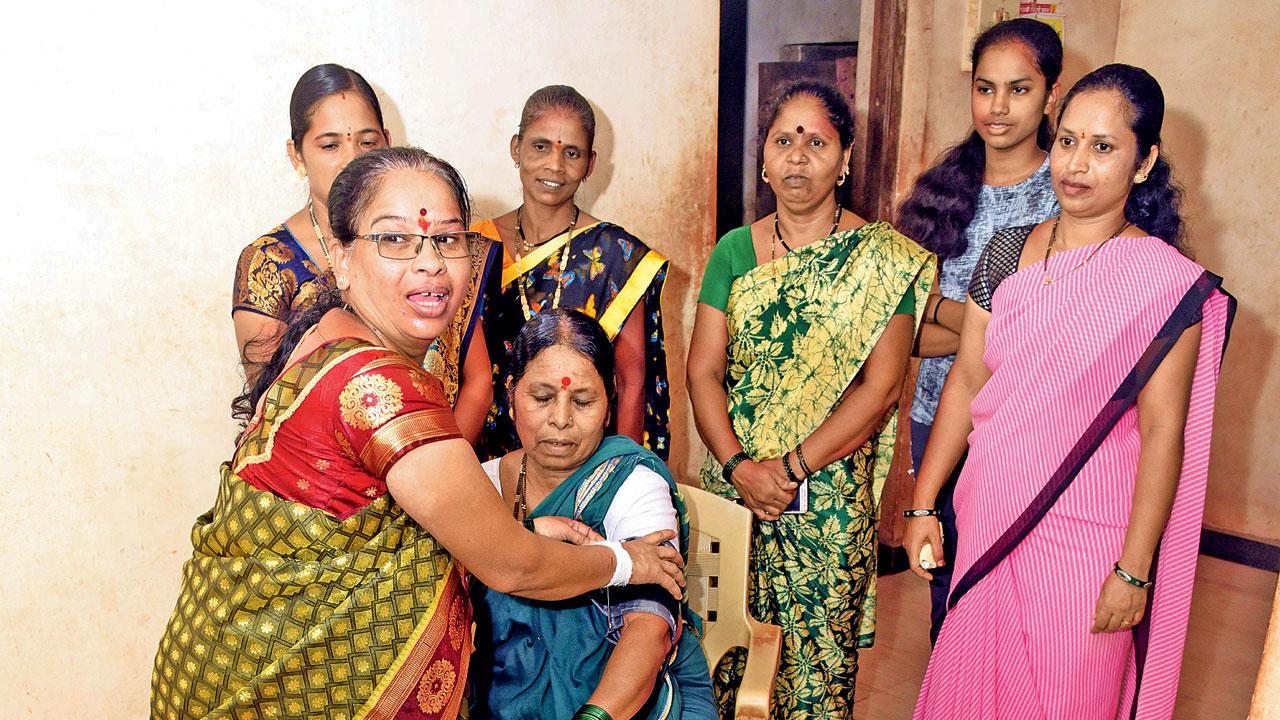
Ashwini Anand Shirke has been working as a health volunteer in Khamgaonwadi. In 2014, she signed up for a six-month-long “Swades mitra” training course in Mhasla taluka, and since then, has been providing basic first-aid services to villagers and also conducts door-to-door health check-ups
When Swades Foundation, then known as SHARE, visited the village in 2004, its priority was to ensure continuous supply of safe drinking water. “They made us water literate, teaching us how to build CCTs [continuous contour trenches] near the slopes of the hills, so that water flowing downhill during the rain percolated into the soil.” Sawant adds that while they built one recharge pond—a pond to catch the surface runoff and increase the infiltration to recharge groundwater in the area—the water literacy campaign empowered them to reach out to local authorities, and demand for another pond to provide water for village hamlets in the vicinity. Today, they have two large tanks that provide running water to each of the 65 homes, every day of the year. The hamlet with a tiny population of 200 villagers, has since then made several interventions to become a model village for others to emulate.
When we visit Khamgaonwadi on a weekday morning, the locals lead us to a village temple hall, where monthly meetings are held by the Village Development Committee (VDC). The VDC is a body comprising men and women from the village community—the idea for this was mooted by Swades Foundation to encourage villagers to become equal stakeholders in the development of their hamlets, and participate in key decision-making process. They VDC functions like a nerve centre, leveraging all government schemes for the village members, and reviewing development plans that are underway. In Raigad, there are currently over 1,100 operational VDCs.

Vithoba Baalu Gosavi, 64, used to work as a peon in Mumbai until 2000. Today, the rice farmer has multiple sources of income—he grows marigold flowers, amba halad (tender turmeric) and pounds and sells red chilli powder
At the village hall, a map of the hamlet has been drawn on chart paper, indicating the number of occupied and closed homes, location of streetlights, school, the temple, water tanks, anganwadi, smashaan bhoomi or crematorium and the kaccha and pakka roads in and around. “This helps us with planning. It tells us how much work is still to be done. We know exactly where the streetlights are yet to come up or where better roads have to be constructed. If we have visitors arriving, we can put them up in the unoccupied homes, which sometimes get abandoned due to migration,” says Sawant. Another chart we saw taped to a wall was titled “Gaavacha Itihias”—history of the village. It highlighted the “first of many firsts”, mentioning the name of the first sarpanch from Khamgaonwadi, the first gram panchayat member, the family that first owned a television and landline, and the first student to acquire a graduation degree. There is also another poster that highlights the skilled force in the village—the tailors, masons, carpenters, plumbers, self-help groups, musicians, papad makers. “It gives us an idea of the skillsets that a village possesses,” says Ujjwala Vijay Gosavi, a villager. The other key poster lists out the number of tasks needed to be addressed daily—wet and dry waste segregation, which is handled by volunteers; whether all homes have a toilet and running water tap; if every family member has an Aadhar or Pan card; how many homes need to repaired and painted, etc. The VDC maintains a bank account, where every household deposits a basic amount regularly—the money is then used in the development of the village.
“Every member in the village has a health insurance provided by the government. We have been given a poster by Swades, which has been displayed in a centrally-located area, so that villagers know which health conditions are covered by this insurance, and the hospitals that they can go to under this scheme,” says gram panachayat member Netra Nitin Navghare.
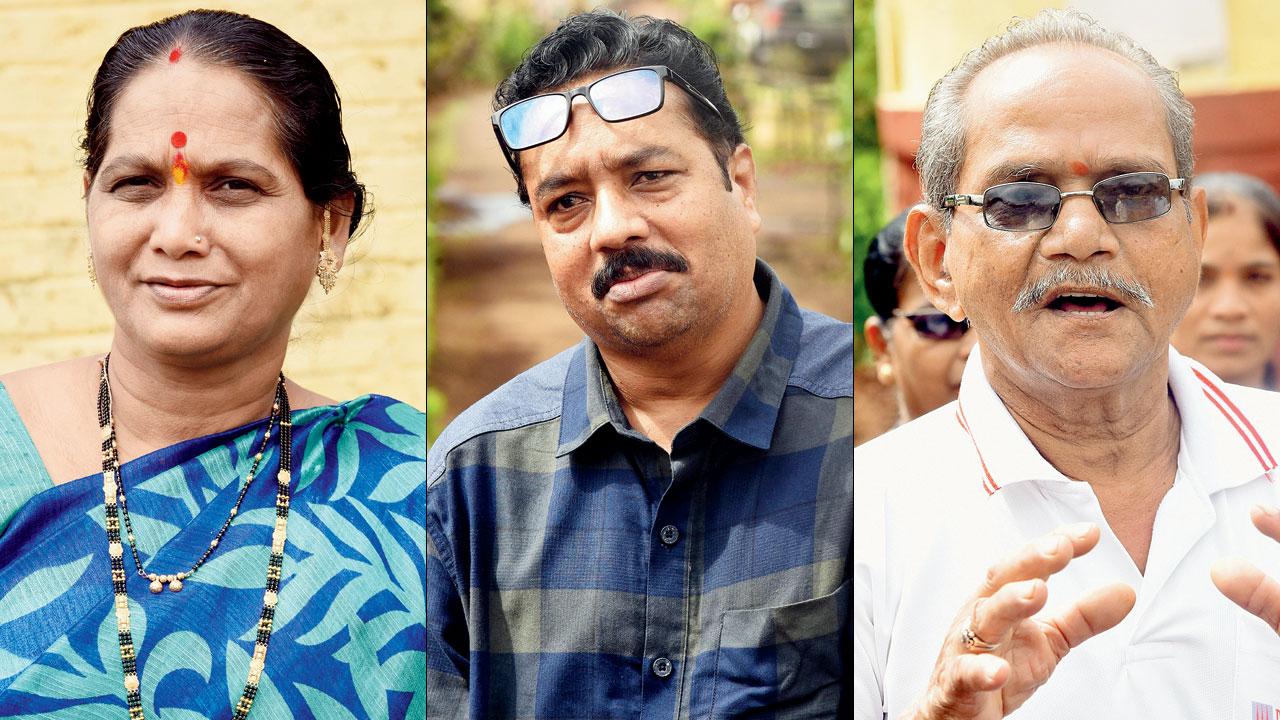 Smita S Jangam, Prasad Patil and Balkrishna L. Sawant
Smita S Jangam, Prasad Patil and Balkrishna L. Sawant
Ashwini Anand Shirke has been working as a health volunteer here for the last eight years. In 2014, she signed up for a six-month-long “Swades mitra” training course in Mhasala taluka, and since then, has been providing basic first-aid services to villagers—going door-to-door for regular health check-ups (blood pressure, weight, diabetes) aiding people in vaccination programmes, and also providing over-the-counter paracetamol, and creams for rashes and bruises. “I also facilitate health camps and cataract surgeries for seniors,” she tells mid-day.
One of the larger goals of the NGO has been to make the villages financially able, with each household earning an annual income of at least Rs 2 lakh each, with multiple sources of income generation. “Earlier, the village was exclusively reliant on rice farming,” says Patil, while the women, were mostly homemakers. Khamgaonwadi would see large-scale migration post the farming season, with men taking up odd jobs in Pune, Panvel and Mumbai. “We are now encouraging them to grow more crops and learn other skills like agarbatti-making, and cashew-processing,” adds Patil. The village has women-led self-help groups, each comprising 10 members who supply pickles, candies and papad to local stores in the district.
Vithoba Baalu Gosavi, 64, used to work as a peon in Mumbai until 2000. When the company where he was employed shut down, he was given a severance amount of Rs 1 lakh with which he bought a rice mill, and moved back to his village to practice rice faming. “For the last 10 years, I have also been growing jhendu [marigold flowers]. Apne Khamgaon ka jhendu Goregaon main sau rupay kilo ke neeche nahin jaata [the flowers from here are not sold for less than Rs 100 in Goregaon]. I also grow amba halad [tender turmeric] that I sell for Rs 700 per kilo... that haldi beats all fairness creams,” Gosavi smiles, whose annual income has doubled since he managed to juggle vocations.
Where Khamgaonwadi has become a shining example of what 360 degree development should look like, another Raigad hamlet, Jangamwadi in Tondsure village is setting new goals for women’s rights. In 2017, it gave Tondsure its first female sarpanch, Smita Sudhakar Jangam. Two months ago, the VDC decided to change all the nameplates of the houses, with the name of the matriarch on the door, along with a new house number. “All these years, the gram panchayat would list the name of the senior-most male member in their assessment list form. We felt that women should have equal stake in their homes. It might feel like a token change, but the truth is that for a woman to see her name on the door is a matter of pride and joy,” says Siddhi Gajanan Jangam, a Jangamwadi resident. Patil says the decision to change the nameplates was taken by the villagers themselves. “As an NGO, we help create and nurture an environment that empowers them to think for themselves... when you sow the seeds of change, you start creating changemakers.”
The afternoon we arrive, two girls are on their way to pursue a two-year ophthalmology course from a centre in Coimbatore, which the NGO has tied up with. The girls will be later hired by the Sankara Eye Hospital in Panvel. The hope is to enlist their help to set up eye clinics and conduct regular camps in their villages once they return.
Speaking with mid-day, Dr Kiran Patil, CEO, Zila Parishad Raigad, says the mission that has been adopted by the NGO for development of villages in Raigad is not far removed from what’s being implemented by the ZP’s Panchayat Samiti that’s working with villagers to create “adarsh grams” as part of the Saansad Adarsh Gram Yojana (SAGY), launched by PM Narendra Modi in 2014. “Since our vision and objectives are similar, we have been collaborating together right from the beginning to work in seven talukas of the district. While Swades has been mobilising the villagers with the help of village functionaries, and helping fill the gaps where needed, we are helping by providing financial support where possible and ensuring that the benefits of government schemes reach them. It’s great teamwork, and we are always open to working with other NGOs, volunteers and organisations who want to participate in our mission to create ideal, smart villages.”
According to Prasad Patil of Swades, once a hamlet is certified as a Dream Village, they will prepare an exit strategy. “We follow a 4E plan—which is to engage, empower, execute and exit. Exiting might not be as simple as it seems on paper. For that, the village has to become self-sustainable. But our focus anyway is not to build villages... we are here to build people. When people take ownership of the place they live in, the village build itself.”
See Video:
Some parametres a Dream Village must meet
>> Enabling children to acquire education till Class XII
>> Building health centres
>> Training community health volunteers
>> Rreviving cultural heritage, arts and crafts
>> Improving economic prospects
>> Constructing motorable roads
>> Segregating waste
>> Ensuring every home has a toilet and tap
1,100
No of Village Development Committees run by the villagers currently operational in Raigad
 Subscribe today by clicking the link and stay updated with the latest news!" Click here!
Subscribe today by clicking the link and stay updated with the latest news!" Click here!







